

1971: Garlits goes 'Big,' Funnies go 220, Sox goes wild, and NHRA goes to Canada
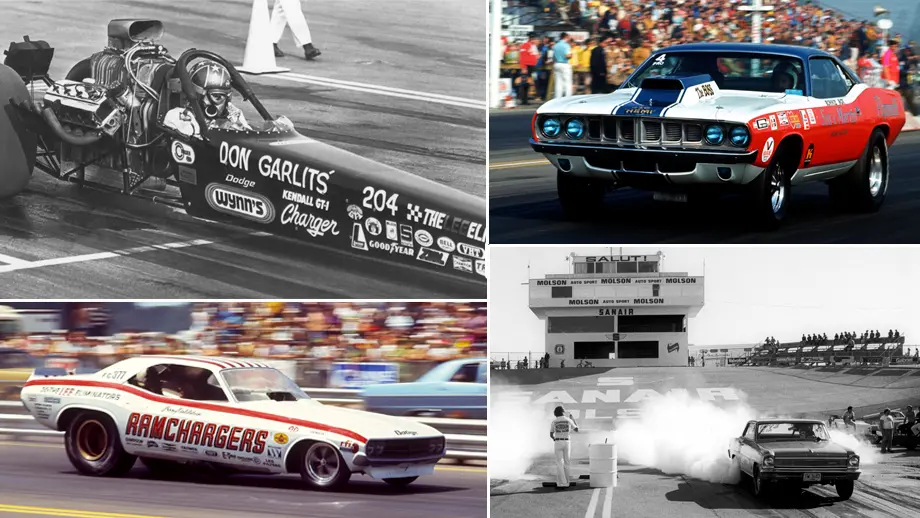
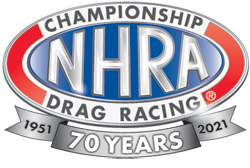
As I mentioned in this space last week, NHRA is preparing for its 70th-anniversary celebration next year, a chance to reflect and remember all of the great racers and great moments that helped get us where we are today. As you can imagine, this is right in my wheelhouse and I'll be offering my impeccable memory to … wait … what was I just saying? Ha! All kidding aside, I'll be lending my expertise, research, and stats to help plot out the print and web portion of the celebration.
Seventy years is a long time ago (back to when Chris Karamesines could first order a beer), so there’s a lot to cover, but for my first stop here I thought I’d turn the clock back an even 50 years ago to the 1971 season to see what was going on in the NHRA world back then.
SETTING THE SCHEDULE
The 1970 season — NHRA’s “Super Season” after boosting the national event count from four in 1969 to seven in 1970 — had been a huge success and paved the way for future expansion but 1971 started with the big news that the second edition of the new-for-1970 Summernationals was being moved from its first home at U.S. 30 Drag Strip in York, Pa., to Madison Township Raceway Park in Englishtown, N.J., where the Summernationals lived (despite numerous name changes) on until the track, later known as Old Bridge Township Raceway Park, closed its doors after the 2017 season. Raceway Park had previously been the site of the 1968 NHRA Springnationals, which were subsequently moved to Dallas International Motor Speedway upon its completion.
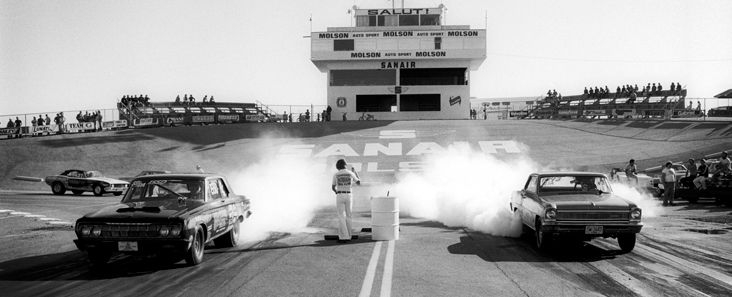
NHRA added an eighth event for 1971, Le Grandnational at Sanair Int'l Dragstrip in the previously sleepy town of St. Pie, Quebec (population about 5,000), about an hour east of Montreal, marking the first NHRA national event held outside the United States. The event remained on the schedule until 1992, much to the chagrin of race teams, whose border-crossing horror stories are legend.
The 1971 schedule comprised the Winternationals (Pomona, Calif.), Gatornationals (Gainesville, Fla.), Springnationals (Dallas), Summernationals (Englishtown), Le Grandnational (Montreal), the Nationals (Indianapolis; it wouldn’t become known as the U.S. Nationals until the next year), the World Finals (Dallas), and the Supernationals (Ontario, Calif.). The 1971 World Finals, however, ended up being moved midyear from Dallas to Amarillo, Texas, due to lease conflicts at the Dallas International Motor Speedway facility.
RULES AND STUFF
Entering 1971, NHRA continued to refine its world championship points system, creating an East/West conference structure with Divisions 1, 2, and 3 in the Eastern Conference and the remaining four divisions in the Western Conference. The top 16 points earners in each conference automatically qualified for the NHRA World Finals.
Meanwhile, defending champions in all eliminator categories at major NHRA events were granted free entry and were guaranteed a spot in the eliminations field.
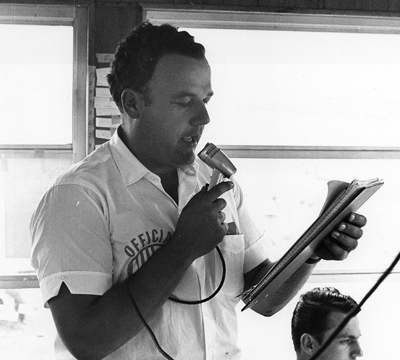
Chrondek introduced its latest timing equipment at the Winternationals. The biggest advance was a built-in computer that displayed the speed automatically to the tower announcers, eliminating the conversion charts to which announcers long had to refer to ascertain the speed. (That process involved matching the elapsed time it took to traverse the 132-foot timing trap to a reference sheet that told them how fast the car must be traveling on average to cover the distance.)
In a post-Springnationals meeting in June, NHRA officials confirmed that the Top Gas category would be eliminated for the 1972 season and absorbed into Competition eliminator. The decision came as no surprise to Top Gas teams as the prospect has been under consideration for several years. At the same time, the Super Stock and Super Stock Automatic classes became part of Modified eliminator, creating a six-eliminator system — Top Fuel, Funny Car, and Pro Stock in Group I, and Competition, Modified, and Stock in Group II. Modified would only remain part of the series until it, too, was axed less than a decade later.
At the Summernationals, NHRA used the Pro Start system over the conventional full Tree for the first time.
After NHRA had to move the Finals from Dallas to high-altitude (3,700 feet) Amarillo Dragway, a correction factor was used for the first time in NHRA national event history during the event.
In November, NHRA announced rules changes for the 1972 season. Highlights included the decision to keep Super Stock and the addition of a BB/FC class for supercharged gas-burning Funny Cars to Comp. In Pro Stock, subcompact cars, such as the Vega or Pinto, would be allowed. Also, three separate weight-to-cubic-inch structures were set up.
TOP FUEL
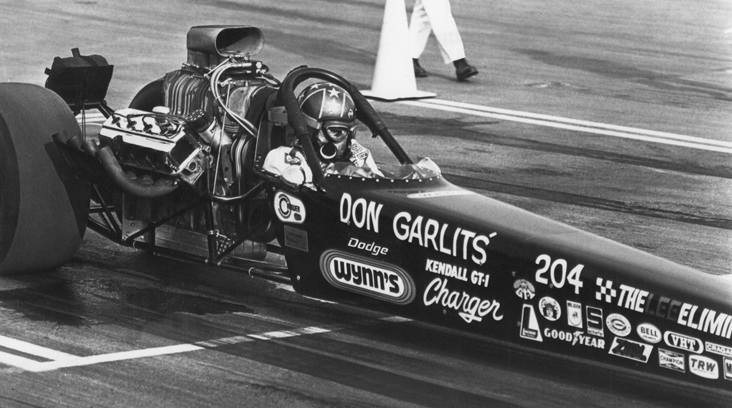
The face of Top Fuel changed forever in 1971 when Don Garlits returned from a March 1970 transmission explosion that severed half of his right foot to win at the Winternationals with his rear-engined Swamp Rat 14 dragster. Within the next 18 months, the venerable front-engined “slingshot,” the primordial and pervasive Top Fuel design, had all but vanished from the class.
By year’s end, more rear-engined cars showed up, and while slingshots still won five of the eight events (Garlits also won the Springnationals and Arnie Behling the Summernationals in Bruce Dodd's rear-engined "Spirit"), the handwriting was clearly on the wall. Don Prudhomme made a lot of noise when he debuted the Hot Wheels wedge dragster, an aero design that many others followed, none of which met with much success due to their weight. (For more on wedge dragsters, go to the Insider archive and search "wedge" or scroll down to 2010; there's quite a collection of stories and photos.)
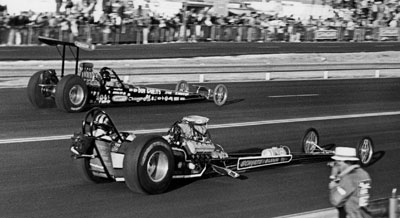
Other Top Fuel winners in 1971 were Jimmy King (Gatornationals), Pat Dakin (Le Grandnational), Steve Carbone (U.S. Nationals; the great “burndown” event with Garlits), Gerry Glenn (World Finals, earning him the world championship on Garlits’ final-round red-light, pictured at right, after a fantastic season of his own), and Hank Johnson (Supernationals).
Garlits didn’t win the championships butbecame the first to repeat a Top Fuel victory at the Bakersfield (Calif.) March Meet (his first came in 1965), and, not surprisingly, Garlits, was named Top Fuel Driver of the Year and Man of the Year at the Car Craft Magazine All-star Drag Racing Team banquet and also Man of the Year by Drag News.
Entering 1971, the national record was 6.53, recorded by Tom Raley in qualifying No. 1 in Jim and Alison Lee’s dragster at the 1970 World Finals in late October at Dallas Int’l Motor Speedway; and 232.55 by Larry Hendrickson in John Blanchard’s “The Gladiator” rail at the Division 6 points meet at Mission Raceway in Mission, B.C. in July.
By 1971’s end, Garlits had blown away that e.t. mark running 6.21 at the U.S. Nationals. Garlits, who a month earlier had recorded the quickest three runs in history (6.35, 6.37, and 6.38) en route to Top Fuel honors at the Popular Hot Rodding Championships at U.S. 131 Dragway, didn’t back up the .21 for the national record, but later that year set the record at 6.26 in Gainesville, Fla. Incredibly, Hendrickson’s speed record survived the year before it was broken in early 1972 by Tony Nancy at 233.16.
FUNNY CAR
Leroy Goldstein had shattered the seven-second Funny Car barrier in 1970 and ran as quick as 6.83 at that year’s U.S. Nationals, which is also where race winner Don Schumacher ran 1970’s national-record speed, 212.26.
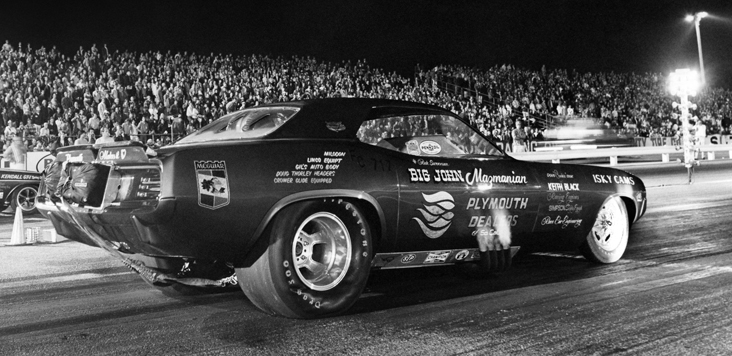
That hint that 1971 might be holding something special in terms of performance came early when Rich Siroonian, in John Mazmanian's car, clocked the first official, backed-up 220-mph run in a Funny Car with a 220.58-mph blast at Orange County Int'l Raceway in January. It was just the beginning of a performance parade.
Butch Maas won the Winternationals for Roland Leong, the Hawaiian’s second straight Funny Car win at the Winternationals and Leong’s fifth Pomona win in eight years (Danny Ongais in Top Gas in 1964, Don Prudhomme and Mike Snively in Top Fuel in 1965 and ’66; and Larry Reyes in Funny Car in 1970).
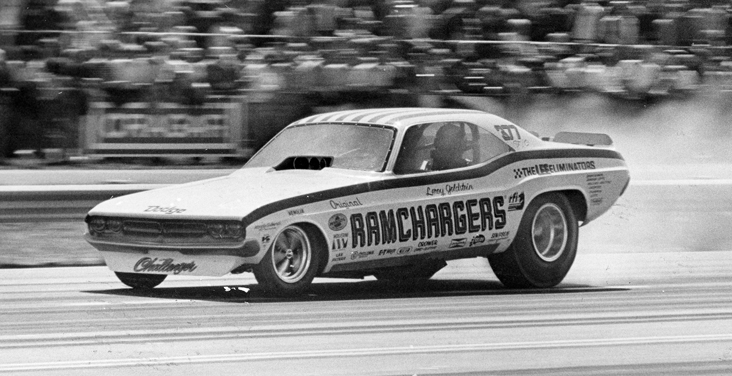
Goldstein and the Ramchargers car continued their performance reign, clocking an historic (but not backed up) 6.71 at 220.58 en route to the Gatornationals Funny Car title. His last two passes were solo runs, the first in the semifinals after Phil Castronovo’s throttle stuck on the burnout and the second when Bobby Rowe couldn’t get his mount fired for the final round.
At the World Championship Series stop at California’s Fremont Raceway in June, Charlie Allen claimed both ends of the Funny Car record at 6.82, 222.22. The speed mark would survive the season, but the e.t. mark was bettered twice more, eventually landing back with Goldstein after a 6.80 at the World Finals.

Other Funny Car winners on the year were Don Schumacher (Springnationals), Leonard Hughes (Summernationals), Sammy Miller (his first and only, at Le Grandnational), Ed McCulloch, his first, at the U.S. Nationals), Phil Castronovo (also his first and only, and it earned him the world championship), and Larry Arnold (Supernationals).
McCulloch, like Don Prudhomme and Tom McEwen before him, was the latest convert to the Funny Car ranks and his Indy win with partner Art Whipple foreshadowed a great career in which he would win Indy six times (five times in Funny Car and once in Top Fuel).

Another Top Fuel stalwart, Jerry Ruth, got a Funny Car and ran both cars at the same events with incredible success on the divisional level in the Northwest, doubling up four times and almost a fifth in Western Conference action. He won Funny Car at all five stops and had four wins in Top Fuel but lost the Top Fuel final at Seattle Int'l Raceway. According to Insider regular Al Kean, Ruth "blew the engine in a Top Fuel semifinal win and was almost finished hooking things up when Herm Petersen made a single for the win. I assumed that happened because of Seattle's infamous curfew. The crowd was eerily silent as Petersen made his run as they all seemed to be hoping for another double."
Although Goldstein’s 6.80 ended the year as the national record, I’d be remiss for not mentioning Bill Leavitt, who ran a stunning series of passes — 6.48, 6.51, and 6.53 — at Lions’ Grand Finale in December, though national records were not available for those runs.
PRO STOCK
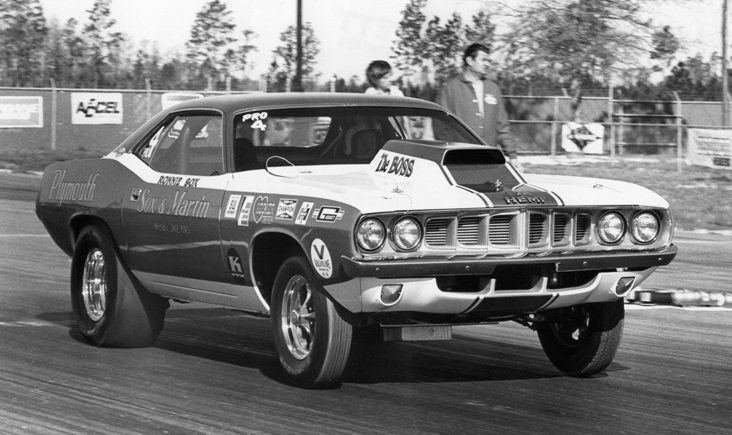
As Exhibit A of the proof that NHRA needed to continue to refine its world champion-crowning process, Ronnie Sox won six of the eight events and still didn’t win the championship.
Sox won the season’s first three races — the Winternationals, Gatornationals, and Springnationals — before experiencing a flat tire and a stunning loss to unheralded Ronnie Lyles in round two of the Summernationals, which were won by Don Nicholson’s Ford Maverick over Rod Shop/Dodge team driver Mike Fons.
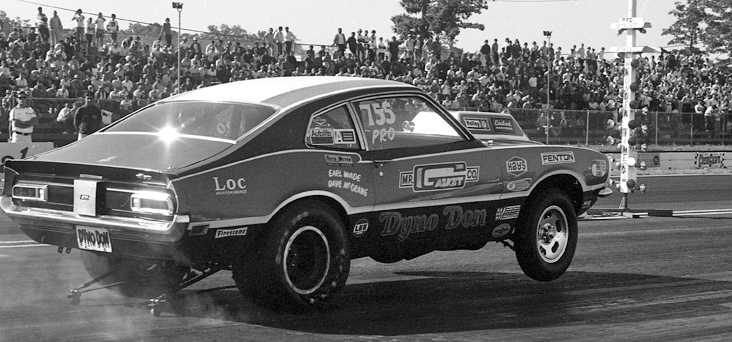
Sox rebounded from that disappointment to win Le Grandnational (where he reset the national record at 9.52) and the Nationals (his second Indy triumph after a 1969 Super Stock victory) but was defeated by Fons in the semifinals of the World Finals, 10.06 to 10.14, the only time that he was actually outrun in the season. Fons went on to beat the Sox & Martin team car of Herb McCandless in the final, 10.05 to 10.40, to steal the world championship.
Sox earned a small amount of satisfaction when he won the post-Finals/non-points Supernationals, but he and his fellow Mopar dominators were sent reeling when NHRA officials to adopt a weight-break policy for 1972, which permitted straight inline-valve wedge engines to run at 6.75 pounds per cubic inch, staggered-valve engines to run at 7.00 pounds per cubic inch, and Hemi cylinder-head cars to weigh in at 7.25 pounds per cubic inch.

The Mopars lost their performance advantage and Sox his mojo. In 1972, it was Chevy’s turn, accumulating seven of the eight wins, with Bill Jenkins’ groundbreaking Vega winning six, Ray Allen’s Vega winning Indy, and only Don Carlton scoring for Plymouth at the Gatornationals, and Sox never won another NHRA national event.
From a performance perspective, Pro Stock also had a breakthrough year like Top Fuel and Funny Car. In 1970, Pro Stock had witnessed its first nine-second run in its first season as a class, with Bill Jenkins ran 9.98 at the Winternationals, but the record wasn't bettered until the 1971 Gatornationals. Perhaps sensing a performance stagnation, in March 1971 NHRA lowered the minimum weight a whopping 300 pounds (from 2,700 to 2,400) before the Gatornationals, and Sox responded with a stout 9.57.
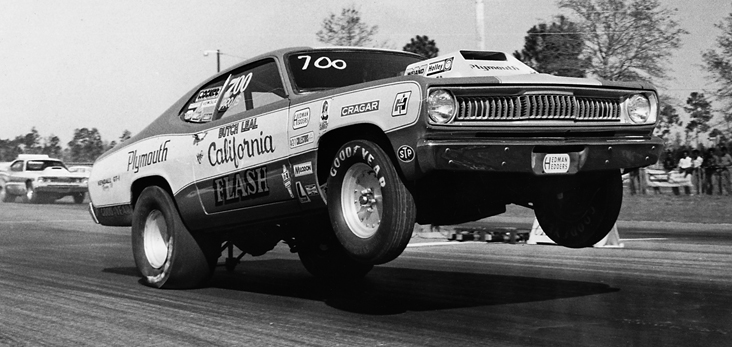
“The California Flash,” Butch Leal, matched Sox’s 9,57 record at the World Championship Series stop at Northern California’s Fremont Raceway in June and reset the speed mark from Jenkins' 139.53 to 144.92 en route to the Pro Stock victory. Leal’s speed record stood but Sox lowered the e.t. mark for good to 9.52 in Montreal. That record remained until 1973, when class records were retired following the weight-break rule change.
ALSO NOTABLE
In a sign of the mainstream acceptance of the sport, JCPenney Auto Centers began to carry the NHRA Rulebook. (remember JC Penney?)
For the first time, live radio drag coverage of the Springnationals in Dallas in June was broadcast by the Diamond P radio network on stations coast to coast. At the same time, the race also was broadcast on television, with live coverage of eliminations in 90 markets.
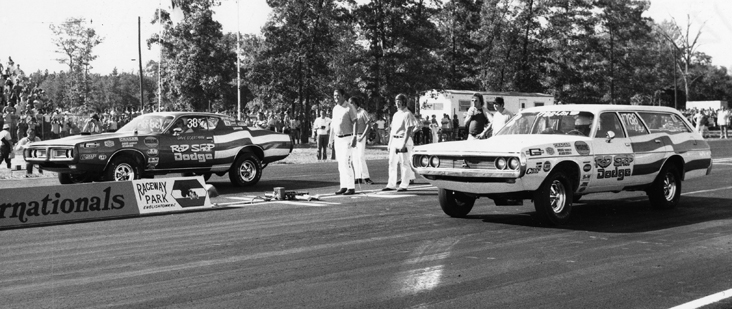
Judi Boertman beat her husband, Dave, for the Summernationals Stock title to become the second woman driver to win a national event. Dave red-lighted to his wife and, to this day, swears it wasn't a gimme, but tens of thousands of couch-bound husbands might doubt that.
Shirley Muldowney became the first woman in the six-second zone with a 6.84, 219 on her way to the Funny Car win in Rockingham, N.C.

On Sept. 21, NHRA President Wally Parks, Sox, Snow, and Garlits attended a special White House reception hosted by President Richard Nixon to acknowledge the sport of auto racing. The guest list was long (almost 150 people) and impressive and included (among many others) Mario Andretti, Richard Petty, Al and Bobby Unser, Bobbie and Donnie Allison, Craig Breedlove, Mark Donohue, Roger Penske, actor James Garner, Jackie Stewart, Andy Granatelli, Dan Gurney, Parnelli Jones, Carroll Shelby, and Johnny Rutherford, plus industry executives (including future NHRA President Dallas Gardner, then working at Ontario Motor Speedway) and members of the press. Jim and Alison's Lee's Top Fuel dragster was on display (interestingly, Jim was listed as press for the event as a sports reporter).
Amarillo High School vocational shop students and students from other area schools attended the World Finals as guests of NHRA as part of the first NHRA Youth and Education Day.
Al Eckstrand's United States Motorsports Team announced its 1971 Military Motorsports Tour, took the latest Ford muscle cars to U.S. servicemen in Vietnam, Japan, and other locations. Garlits was part of the auto racing fraternity that toured Vietnam to visit U.S. troops.
Quite an incredible season by any account, but just one of 70 that precede next year's March launch in Gainesville. It's going to be a fun year, especially here at the Dragster Insider.
Phil Burgess can be reached at pburgess@nhra.com
Hundreds of more articles like this can be found in the DRAGSTER INSIDER COLUMN ARCHIVE



















































